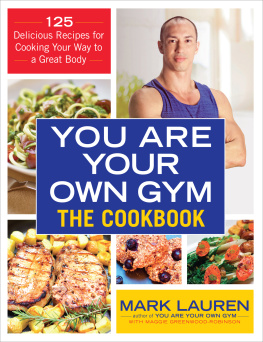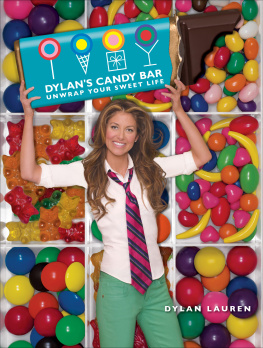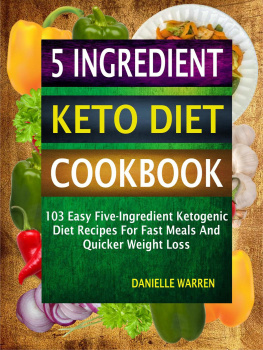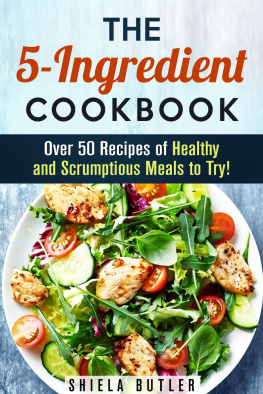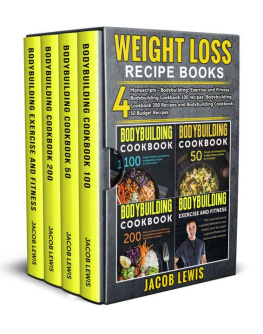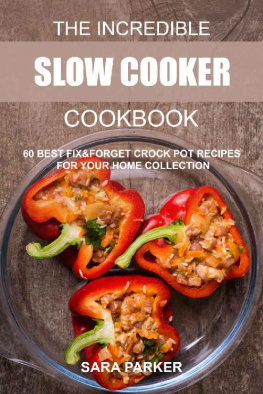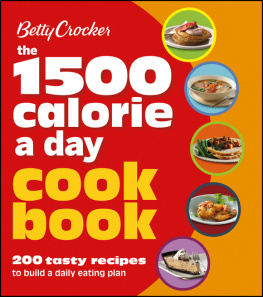
CONTENTS ACKNOWLEDGMENTS Publishing 125 easy-to-prepare, tasty, and unique recipes that neatly fit into the Body Fuel plan was a daunting project given my exceptional plainness of taste that has always allowed me to sustain a healthful diet with very little variety. With the help of military dining facilities that reliably serves four hot meals per day, my trainees were also easily able to follow my nutritional guidance without much need for culinary creativity. Had it not been for the tireless, innovative, and tasteful work of Samantha Nomany, You Are Your Own Gym: The Cookbook would have been a very different product. For over six months, she burned the candle at both ends to create, test, tweak, and again test the many recipes in this book, while also handling the operational management of my company. Its because of Samanthas immense contribution, with the support of her assistant Anne Nguyen, that the recipes in this book and the 3-Block System in Body Fuel can now be enjoyed with little effort by the very broad and culturally varied audience of You Are Your Own Gym. BY MARK LAUREN You Are Your Own Gym: The Cookbook Body Fuel You Are Your Own Gym Body by You ABOUT THE BOOK With his breakout bestseller
You Are Your Own Gym, fitness phenomenon Mark Lauren introduced people around the world to no-equipment bodyweight exercise.
The perfect companion, You Are Your Own Gym: The Cookbook offers you 125 delicious recipes that adhere to Laurens unique calorie shifting nutritional philosophy to help you cook your way to weight loss, muscle gain, and improved fitness performance. ABOUT THE AUTHORS MARK LAUREN spent fifteen years in the Special Operations community as an operator and physical training specialist. He is the author of the internationally popular body-weight bibles You Are Your Own Gym, Body by You, and Body Fuel. A sought-after personal trainer to civilian men and women of all fitness levels, he is a triathlete and former Thai boxing champion. He now lives in Phuket, Thailand. marklauren.com
Facebook.com/bodyweight
@yourowngym MAGGIE GREENWOOD-ROBINSON is a New York Times bestselling collaborator who specializes in health and fitness.
She lives in Dallas, Texas.
With this cookbook, youll be creating delicious meals that support my secret weapon for fat loss and muscle building, which I introduced in Body Fuel: calorie cycling. Unlike the typical calorie-restrictive diet, in which you stick to a static, low-calorie plan, calorie cycling periodically changes your caloric intake, up or down; your calories never stay constant for more than a few weeks. By jerking your metabolism around so that it never gets sluggish but keeps burning fat, calorie cycling naturally leads to more body-firming muscle and less unsightly (and unhealthful) fat. This concept is similar to what happens when you change your workout volume and intensity from time to time in order to keep your body adapting to new stimuli. Periodic changes in your caloric intake (volume) and strictness of your fuel choices (intensity) do the same thing.
Calorie cycling leads to more muscle and less fat than if you were to follow the same diet for four weeks straight or longer. Calorie cycling also prevents diet plateauing, in which you seem to stop losing weight, or you find that your clothes arent getting looser anymore. Youre stuck. Every serious athlete, exerciser, or dieter has been there and done that. With calorie cycling, theres less likelihood of plateauing until you have reached your target weight, because theres more change, and that equals more adaptation. On my plan, youre also encouraged to eat a wider range of foods than most weight-loss diets prescribe.
Thats because many of the foods (such as fruit and other carbs) normally restricted on diets purely about weight loss are actually required for building muscle and recovering from good, hard workouts. FAST FUEL, SLOW FUEL When you are calorie-cycling, the adjustment of caloriesup or downcomes primarily from the carbohydrates you choose. I look at carbs as slow or fast based on the speed at which the body absorbs them. All carbohydrates must be converted to glucose, a type of sugar, before they are absorbed into the bloodstream. Carbs are absorbed at either a fast rate or a slow rate. That rate of absorption produces a proportionately strong release of the hormone insulin, which regulates the amount of sugar in the blood.
When we eat carbs that absorb quickly (fast-fuel carbs), such as candy, soda, fruit, or fruit juice, an insulin surge rapidly depletes blood sugar and converts these carbs to fat. Were also left feeling tired, and we crave more food to restore normal blood sugar levels. Theres a positive exception to this scenario, though: eating some fast-fuel carbs during or immediately after intense exercise replenishes depleted muscles and aids in the recovery and building process. By contrast, slow-fuel carbs such as vegetables are absorbed more slowly and do not produce this fat-gaining insulin reaction. Slow-fuel carbs also tend to be lower in calories, high in fat-burning fiber, and packed with many more vitamins and minerals than some fast-fuel carbs. GLYCEMIC INDEX VERSUS GLYCEMIC LOAD How can you tell which carbs are fast-fuel and which are slow-fuel? I use a tool called the glycemic load , or GL.
GL is a numerical ranking system for carbs that measures the amount of carbohydrates in a standard serving of food, say a banana or a cup of rice, and how fast or slow the carbohydrates in that food are released into the bloodstream. The GL number is the best indicator of what a particular food does to your blood sugar. The lower the GL of a food, the better it is for weight control and overall health. Now, you might be thinking: Is glycemic load the same as glycemic index? No. The glycemic index indicates how quickly a carb turns into sugar in your bloodstream, but it does not consider how much carbohydrate there is in a particular servingin other words, the amount you actually eat. Its better to focus on the glycemic load instead.
SLOW-FUEL CARBS Slow-fuel carbs have a GL rating of 1 to 6, and they include all low-calorie, high-fiber vegetables such as greens, salad vegetables, broccoli, cauliflower, green beans, tomatoes, yellow squash, zucchini, and so forth. These can be eaten with reckless abandon at any time. At most of your meals every day, you want to include slow-fuel carbs. Slow-fuel carbs are also low in calories and high in fiberproperties that fight weight gain and promote weight control. You can fill up on slow-fuel carbs because their calorie counts are negligible. You stay full longer and can resist the urge to splurge on fattening foods.
Plus, the fiber in slow-fuel carbs is a true anti-obesity weapon. The less processed and the more natural the food (like slow-fuel carbs), the fewer calories and less fat your body absorbs. The fiber also keeps you feeling full, so you dont overeat. FAST-FUEL CARBS Carbs with a GL of 7 or higherincluding healthful options such as grains, grain-based products, potatoes, pasta, sweet potatoes, rice, and fruit, and much less healthful options such as fruit juice, sports drinks, and sodasare considered fast-fuel carbs. They stimulate a greater insulin release and are digested and absorbed quickly by the body. There are two specific times of day that its okay to eat fast carbs: upon waking in the morning and after a rigorous workout.

